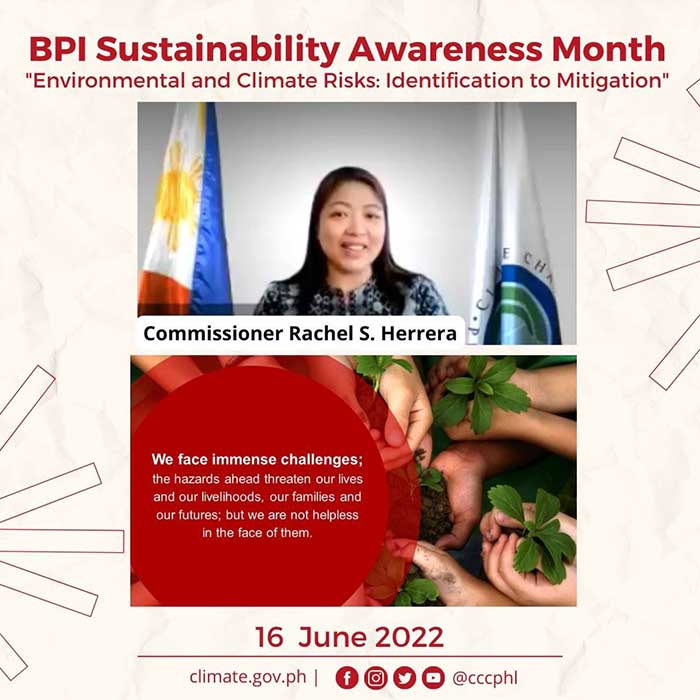
The Climate Change Commission (CCC) underscored the importance of managing climate risks in order to build climate resilience, but urgent and drastic changes must be made to avert the worst of the climate crisis and limit global warming to 1.5˚ Celsius.
The climate body explained that climate-related risks are potential negative impacts that we may experience because of climate change—from extreme weather events like floods, typhoons, and heatwaves to slow-onset events like rising sea levels, ocean acidification, desertification, and the loss of biodiversity.
“We have to make it clear that resilience is not just about withstanding disasters again and again. It’s about being able to anticipate and adapt. It’s about preparing, not just about responding,” said Climate Change Commissioner Rachel Anne S. Herrera in a webinar organized by the Bank of the Philippine Islands (BPI) during the Philippine Sustainability Month in June. “As a developing country, there are risks for the Philippines because we are more vulnerable to hazards, the greater majority of our people also have less means to cope and to bounce back in the event of disasters. With climate change accelerating, these risks will only multiply and worsen”, she added.
To urgently build resilience capacities of our communities, CCC Secretary Robert E.A. Borje stressed that climate policies, programs and projects, and promotions must be anchored on the principle of Building Right At First Sight. This is to ensure the optimal use of our limited resources to science- and evidence-based priority climate change programs.”
Herrera further explained that there are four broad approaches in managing climate risks. First is through mitigation, which means cutting down on greenhouse gas emissions, by using renewable energy or biking and walking instead of using cars, as well as refusing single-use plastics. Second is through adaptation, which means improving our capacity to prepare, respond, and recover from climate impacts, by establishing multi-hazard early warning systems, rainwater harvesting, starting seed banks, reforesting mangroves, cultivating rooftop gardens, building roadside ditches and sea walls, and having practice drills for disaster response and preparedness.
Herrera also mentioned geoengineering or climate engineering, which is the large-scale modification of our climate, through solar radiation management and carbon sequestration. And finally, expanding knowledge base to learn and understand more about our climate and to bring science up to policymaking tables and to our communities, in order to manage climate risks better.
Herrera also cited the Department of Science and Technology’s HazardHunterPH, which is the country’s one-stop shop for seismic, volcanic, or hydrometeorologic hazards, as one of the best examples of how we can improve the way we manage the risks we face, whether as individuals, as institutions, or as communities.
“The challenge now is to bring this kind of awareness, this kind of proactive action on addressing climate risk, to a wider scale, reaching especially our last mile communities. We face immense challenges; the hazards ahead threaten our lives and our livelihoods, our families and our futures; but we are not helpless. We in the CCC are hopeful that we can ramp up our capacity to manage climate risks wherever we are. In doing so, we can chart a path towards a safer and truly more resilient future for all Filipinos,” Herrera concluded.




















